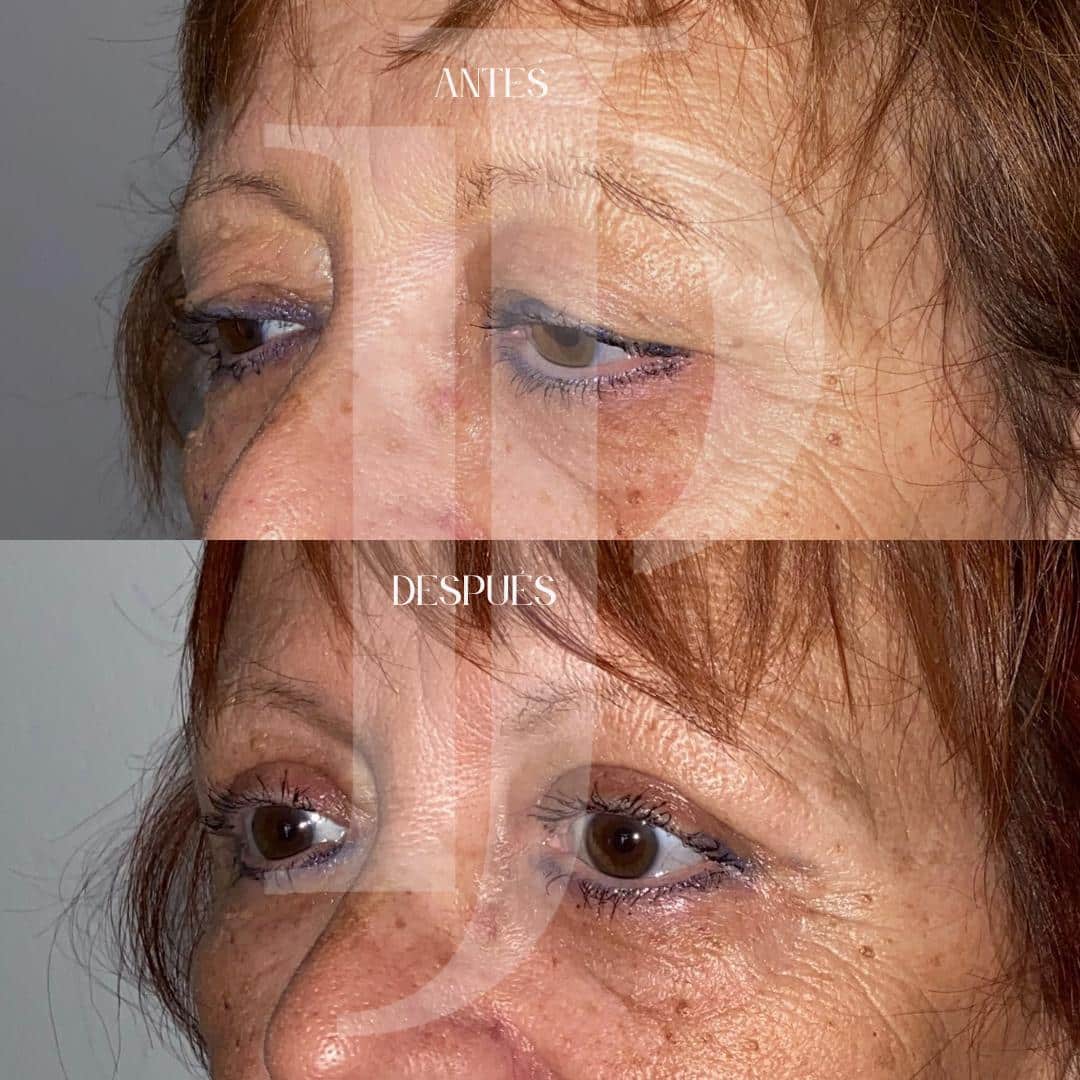As we age, the skin of the eyelids loses elasticity and the muscles that support them weaken, which can generate excess skin and fat around the eyes. Besides being an aesthetic concern, in some cases it can affect vision by reducing the visual field. To correct this problem, we can resort to blepharoplasty, one of the most common surgical procedures. Dr. Puertas, a specialist in Plastic and Reconstructive Surgery at Paracelso Sagasta, explains everything you need to know about this procedure.
What is blepharoplasty?
Blepharoplasty is a surgical procedure designed to remove excess skin, fat and muscle in the eyelids. With it, you can correct the drooping of the upper eyelids and reduce bags in the lower eyelids, achieving a more youthful and rested appearance.
Depending on the needs of each patient, this procedure can be performed only on the upper eyelids, on the lower eyelids or on both in a single surgical session.
It is very common to combine this intervention with other cosmetic-medical treatments such as neuromodulators (botulinum toxin or Botox) in the “crow’s feet”, forehead and between the eyebrows, as well as with other surgical procedures such as eyebrow lifting.
The pre-op
Before the procedure, the specialist will evaluate your case and explain the results you can expect. He or she will also analyze your medical history and sometimes perform eye tests to measure tear production, eyelid structure and peripheral vision.
In addition, the surgeon will provide you with clear instructions on how to prepare for surgery. This will include recommendations on diet, hydration, smoking and medication use, as well as pre-procedure facial hygiene.
The operation
Blepharoplasty is usually performed on an ambulatory basis, that is, it does not require hospitalization and the patient can return home just a few hours after the intervention. The surgery is usually performed under local anesthesia, with or without sedation, and lasts approximately one to two hours, depending on the case.
During the procedure, the surgeon will act on the eyelids by releasing and removing excess skin and tightening the orbicularis oculi muscle. The incisions are made in the natural crease of the upper eyelids and just below the eyelashes in the lower eyelids to minimize the visibility of the scars.
In most cases, since only lower eyelid bags are to be removed, a transconjunctival blepharoplasty may be chosen. This method makes the incision inside the lower eyelid, avoiding external visible scars.
Blepharoplasty is a very grateful surgery, but it must be performed by expert hands to ensure good postoperative results and minimize the associated risks.
The post-operative
After surgery, an ointment will be applied to the patient’s eyes and, in some cases, a soft bandage. It is normal for the eyes to feel tight or sore as the anesthesia wears off.
During the first few weeks it is possible to experience excessive tearing, hypersensitivity to light and mild, transient changes in visual acuity, such as blurred vision. In addition, swelling, bruising and numbness of the eyelids may occur, which will gradually diminish with time.
The doctor may recommend the use of cold compresses during the first few days to reduce swelling, as well as keeping the head elevated when sleeping. It is also important to avoid activities that require physical exertion, the use of contact lenses and direct exposure to the sun, since the skin in the treated area will be more sensitive.
Scars may remain slightly pink for 3 months or more after surgery, but will eventually fade to thin, white lines that are almost imperceptible due to the strategic placement of the incisions.

Before and after of a blepharoplasty
Blepharoplasty not only improves the appearance of the eyelids, but can also contribute to an improved quality of life in cases where excess skin affects vision. If you are considering this procedure, it is essential to be evaluated by a specialized surgeon.
Dr. Puertas, a specialist in Plastic Surgery at Paracelso Sagasta, will accompany you throughout the entire process, from the first assessment consultations to the post-operative follow-up. His personalized approach ensures natural results that combine aesthetics and functionality. Don’t hesitate to schedule your consultation.

